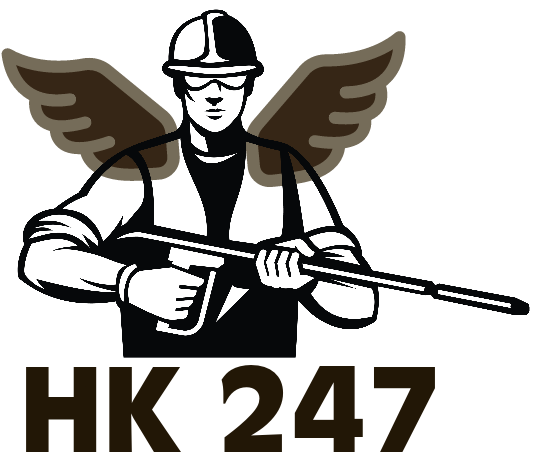Wet Cleaning
Wet cleaning refers to the process of using water and water-based cleaning solutions to remove dirt, stains, and contaminants from various surfaces and materials. This method is widely used due to its effectiveness in dissolving and washing away a wide range of soil types. It is essential for cleaning hard surfaces, textiles, and many types of flooring. This tutorial will provide detailed information on the wet cleaning method, including techniques, equipment, applications, safety protocols, and best practices.
Methods and Techniques of Wet Cleaning
1. Basic Wet Cleaning:
- Process: Involves using water along with detergents or soaps to clean surfaces. This method is suitable for general surface cleaning.
- Technique: Apply the cleaning solution, agitate with a brush or cloth, and rinse with clean water.
2. Steam Cleaning:
- Process: Utilizes steam generated from boiling water to clean and sanitize surfaces. Effective for removing deep-seated dirt and killing bacteria and germs.
- Technique: Direct steam onto the surface and wipe clean with a cloth or vacuum the residue.
3. Pressure Washing:
- Process: Uses high-pressure water to remove dirt, mold, mildew, and grime from exterior surfaces such as driveways, pavements, and building exteriors.
- Technique: Direct the high-pressure stream of water at the surface to blast away contaminants.
4. Carpet and Upholstery Wet Cleaning:
- Process: Involves using water-based cleaning solutions along with carpet cleaning machines to deep clean carpets and upholstery.
- Technique: Apply the cleaning solution, agitate with a brush, and extract the dirty water with a wet vacuum or carpet cleaner.
5. Mopping:
- Process: Uses water and floor cleaning solutions to clean and maintain hard flooring such as tile, vinyl, and laminate.
- Technique: Soak the mop in the cleaning solution, wring out excess water, and mop the floor in a systematic pattern.
Equipment and Supplies for Wet Cleaning
1. Cleaning Agents:
- Detergents and Soaps: Used for general cleaning tasks, available in various formulations for different surfaces.
- Disinfectants: Used to kill germs and bacteria, important for sanitising high-touch areas.
2. Tools and Machines:
- Mops and Buckets: Essential for floor cleaning.
- Scrub Brushes: Used for scrubbing surfaces manually.
- Carpet Cleaners: Machines designed to clean carpets and upholstery using water and cleaning solutions.
- Pressure Washers: High-pressure machines for outdoor cleaning.
- Steam Cleaners: Machines that generate steam for sanitising and deep cleaning.
3. Protective Gear:
- Gloves: To protect hands from harsh chemicals.
- Eye Protection: To prevent splashes from entering the eyes.
- Aprons: To protect clothing from cleaning solutions.
Applications of Wet Cleaning
1. Residential Cleaning:
- Kitchens and Bathrooms: Wet cleaning is essential for sanitising and removing grime from countertops, sinks, toilets, showers, and floors.
- Living Areas: Regular wet cleaning of floors, upholstery, and carpets helps maintain a clean and healthy home environment.
2. Commercial Cleaning:
- Office Spaces: Wet cleaning of desks, floors, and common areas ensures a hygienic workspace.
- Retail Spaces: Maintaining clean floors and surfaces is crucial for customer satisfaction.
3. Industrial Cleaning:
- Warehouses: Wet cleaning helps in removing dust, dirt, and spills from floors and equipment.
- Manufacturing Facilities: Regular cleaning of floors and machinery to maintain hygiene and safety standards.
Safety Protocols and Best Practices
1. Use Appropriate Cleaning Solutions:
- Surface Compatibility: Ensure the cleaning solution is suitable for the surface being cleaned to avoid damage.
- Dilution Instructions: Follow manufacturer instructions for diluting concentrated cleaning agents.
2. Protective Measures:
- Personal Protective Equipment (PPE): Always wear gloves, eye protection, and aprons when handling cleaning solutions.
- Ventilation: Ensure adequate ventilation to disperse fumes from cleaning agents, especially in enclosed spaces.
3. Proper Technique:
- Spot Test: Test cleaning solutions on a small, inconspicuous area before full application.
- Systematic Cleaning: Follow a systematic approach to ensure no areas are missed. For example, start from the farthest point from the exit and work towards the exit to avoid walking over cleaned areas.
4. Equipment Maintenance:
- Regular Cleaning: Clean and maintain equipment after use to ensure longevity and effectiveness.
- Inspection: Regularly inspect equipment for wear and tear and replace as necessary.
5. Waste Disposal:
- Chemical Disposal: Dispose of any waste cleaning solutions according to local regulations to ensure environmental safety.
- Used Materials: Properly dispose of used cleaning materials such as cloths, mop heads, and protective gear.
Conclusion
Wet cleaning is a fundamental part of our deep cleaning services at Housekeeping 247 Ltd. It involves using water and cleaning solutions to effectively clean and sanitise a wide variety of surfaces and materials. By understanding the methods, equipment, applications, safety protocols, and best practices associated with wet cleaning, our staff can deliver high-quality cleaning services that meet the diverse needs of our clients. This comprehensive approach ensures that we maintain a clean, safe, and hygienic environment in both residential and commercial settings.

